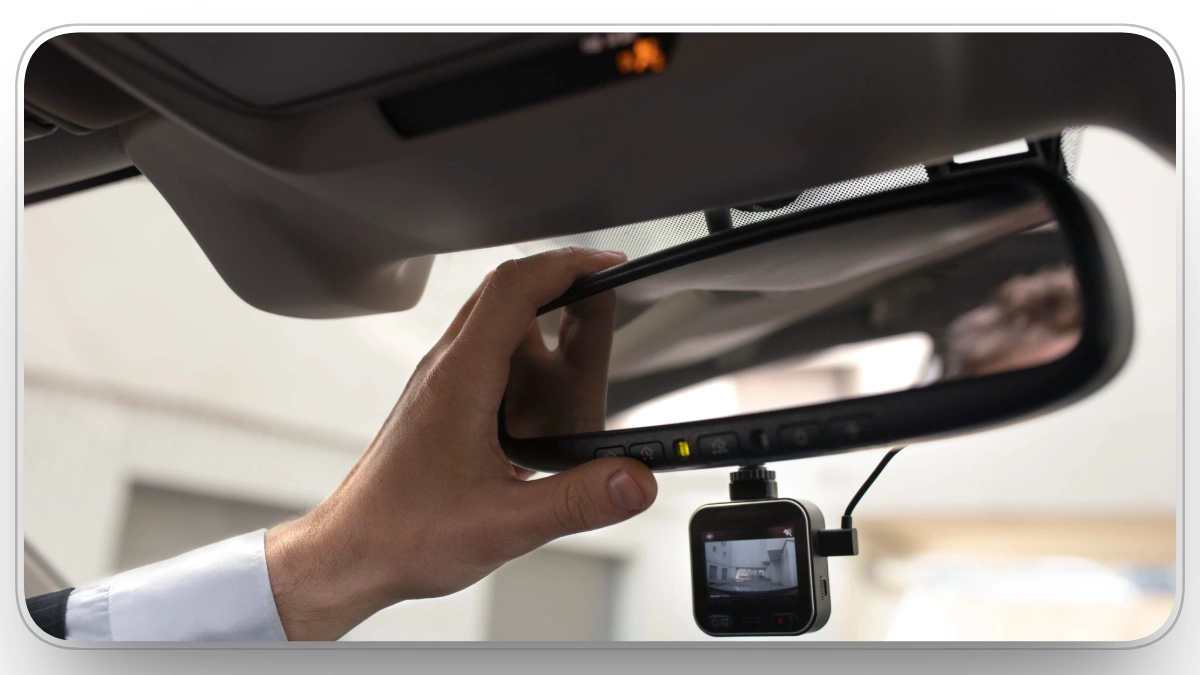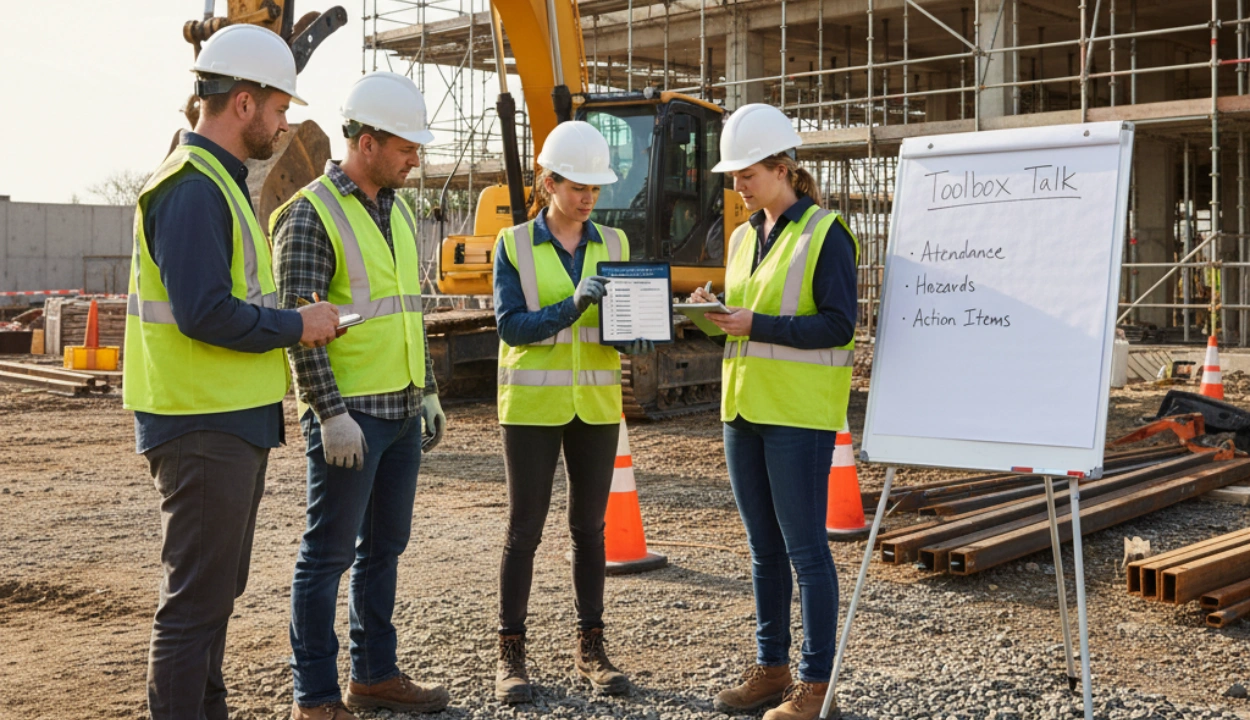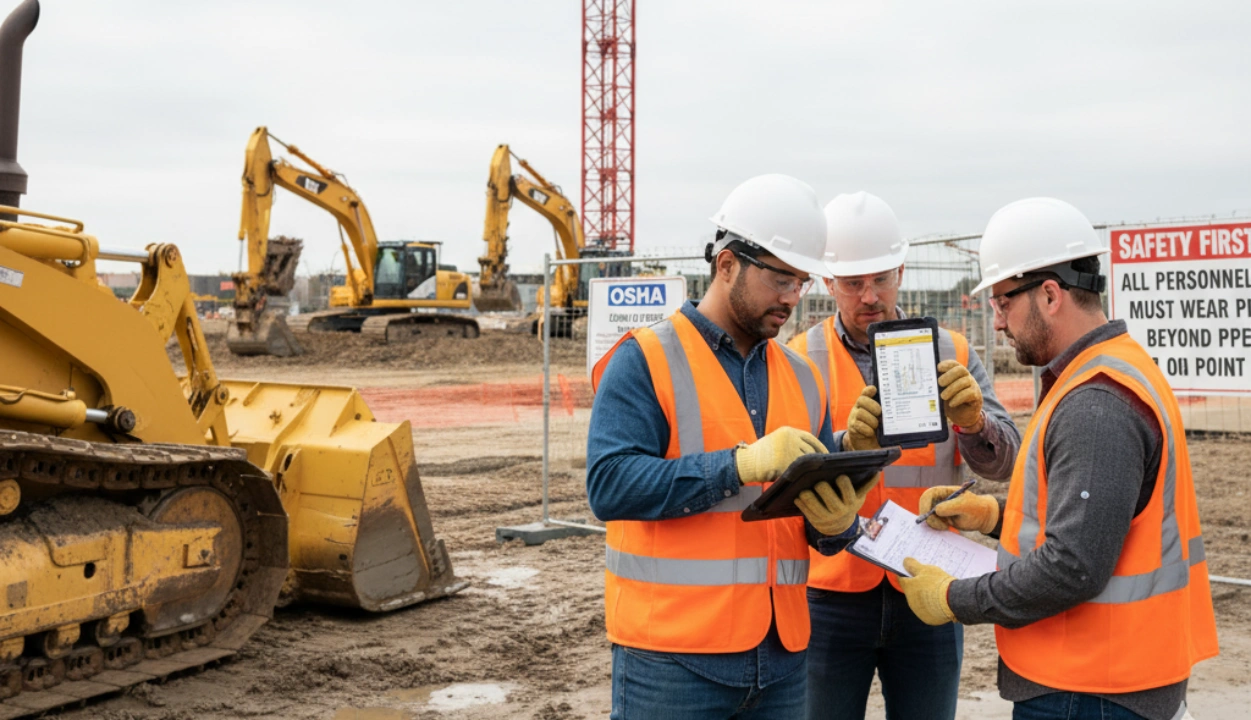11 Features You Must Look For in a Dashcam
Dash cams for construction sites are quickly becoming an essential tool for fleet managers and safety officials.
Dash cams that are both practical and affordable have been made possible by exponential technological advancements.
In the past, dash cams were clunky, complicated, prone to damage, and not very common.
These days, dash cams are quite cutting-edge, long-lasting, and practical.
Greater driver safety, reduced accident responsibility, and more money saved are just a few of the many benefits that modern fleet dash cams offer.
More and more businesses are realising this potential.
A dash cam is a safety net for drivers, businesses, and automobiles. The dashcam's primary use isn't security, though.
Businesses can benefit from dash cams in three ways: driver safety, asset management, and fleet coordination.
Let's take a look at dash cams, examining their benefits and how they work.
11 Dash Cam Features to Consider
1. Cost

Some of the challenges that come with installing dashcams in construction fleets include the costs of acquiring the equipment and other expenses involved in the project.
High-quality dash cams generally cost between $100 and $500 apiece; however, this initial cost may translate to significant savings in the long run.
Aspects like HD video, GPS navigation, and cloud storage for video files contribute to increased safety, lower insurance costs, and improved productivity in operations.
This way, based on the priorities set by a company’s specific operational requirements, budget spending will be optimized, and maximum value will be extracted from the investment in a dashcam system.
2. Field of View (FOV)
.webp)
Image showing Field of View for dashcam at construction
A wide field of view (FOV) dashcam can record the road, adjacent lanes, and obstacles. Today dashcams offer 140º to 180º FOV when it comes to maximum road safety.
The Lytx DriveCam is an example of a fleet dashcam with a wide-angle lens, capable of capturing a 150º view.
This broad coverage helps fleet drivers document incidents such as sudden lane changes or unexpected vehicle movements, which is particularly valuable in busy traffic or multi-lane highways.
Fleet vehicles and rideshare drivers benefit from this wide-angle capability, ensuring full documentation of their surroundings.
However, while a broader FOV minimizes blind spots, it can sometimes lead to image distortion around the edges.
Drivers should look for dash cams that balance a wide angle with clear, undistorted video to avoid missing key details like license plates or road signs.
The ideal dashcam captures both the main roadway and side activities, providing reliable, comprehensive footage.
3. Video Resolution and Quality

For one, high-resolution video is critical, especially in construction environments for detecting license plates, and traffic signs, for insurance claims, or even for training purposes.
Important details that might otherwise be lost in blurry frames. In 2024, many of the top-tier dashcams deliver 2K or 4K recording and provide incredibly sharp images.
As an example, the CM32 Dual-Facing AI Dash Cam records in 4K UHD resolution and features dual-band Wi-Fi for seamless display and remote streaming.
Night vision is also a must, especially if you'll be low-light or nighttime driving, so footage stays easy to view, even in the toughest conditions.
HDR dash cam technology equips the cameras with the ability to auto-adjust the exposure, such that bright lights or shadows won't obscure important details.
They are dash cams with these features, helping with recording quality whether driving through tunnels, under streetlights, or in harsh sunlight.
But if you're going to use footage in evidence for insurance claims or a legal case, the ability to see crystal clear is important.
4. Multi-Camera Systems

For maximum coverage, many modern dash cams come with dual or multi-camera setups.
Dual-camera systems typically feature one camera facing forward and one facing the rear, ideal for covering both ends of the vehicle during an accident.
Some advanced models, such as the VanTrue N2 Pro, even include four-channel setups, offering 360-degree coverage.
This configuration is particularly beneficial for fleet managers to record interactions with machinery, personnel movements, and obstacles on-site.
These setups help capture critical events from multiple angles, which is invaluable for liability protection, accident analysis, and employee safety.
The front camera captures the road ahead, while a cabin-facing camera records interactions with passengers.
Some models allow adjustable rear cameras, providing flexibility in recording angles.
5. Storage and Cloud Backup
Adequate storage is essential for uninterrupted recording.
Most dashcams support microSD cards up to 256GB, enabling continuous recording without frequent manual file management.
Loop recording automatically overwrites old footage when the card reaches capacity, ensuring the dashcam is always ready to capture new events.
Some models include unlimited cloud storage through subscription services, safeguarding recordings even if the camera is damaged or stolen.
Cloud storage also simplifies sharing videos with insurance companies or law enforcement.
However, cloud services may require a stable internet connection or paid plans.
This combination of local storage and cloud backup offers convenience and peace of mind, ensuring critical footage is never lost or inaccessible during an emergency.
6. GPS and Real-Time Connectivity

GPS tracking records location data and speed, which adds a level of detail when something does go wrong.
An alternative to these traditional dash cams is GPS-enabled dash cams such as the Garmin Dash Cam Live.
They log your route and location, so it is easier to reconstruct events leading up to an accident.
Usually, there are versions of some models with LTE connectivity that allow for real-time alerts and remote access.
It is particularly useful for fleet managers who need to monitor their vehicles remotely as well as for people who park in high-risk places.
This is all done with instant connectivity that sends real-time notifications to drivers about break-ins and impacts while they’re out of their vehicle.
GPS systems also collect data that can then be used to resolve insurance claims or traffic disputes where location and speed are known precisely.
With this feature, if drivers feel their case had been compromised they would have evidence to support it.
Clue offers advanced GPS provider integration, fleet managers and individual drivers can monitor their vehicles remotely, track routes, and optimize operations using live data.
This integration aligns with the benefits provided by dashcams offering GPS tracking and LTE connectivity by adding an extra layer of fleet insights through location tracking, real-time notifications, and performance analytics.
7. Parking Mode and G-Sensors

Parking mode is an essential feature for protecting your equipment when unattended.
Dashcams with this function remain active and start recording if they detect movement or impact.
G-sensors further enhance this feature by locking important footage, preventing it from being overwritten during loop recording.
It is particularly useful for tracking vandalism and theft on-site.
Advanced parking modes can differentiate minor vibrations like wind and passing pedestrians from strong impacts.
Some motor models even send real-time alerts to the driver’s phone when an incident is detected.
This feature is very useful for vehicles parked for long periods, in public places.
Driving with parking mode gives drivers peace of mind, knowing their vehicle is being watched if they are away.
8. AI Assistance for Driver Monitoring
New technologies in AI have helped enhance what dashcams can do, specifically identifying the symptoms of tiredness or inattention on the part of the driver which would be particularly crucial when working on construction sites where safety is paramount.
By using self-powered or mounted AI-assisted dashcams, a driver’s behavior can be observed with real-time video analysis in search of signals such as heavy eyelids, head nodding, or off-road gaze.
The system can provide the driver with an on-the-spot response or report to the managers of a fleet to intervene promptly.
This feature is especially beneficial to construction fleets that may be working in high-risk areas where driver drowsiness, distraction or fatigue may lead to negative consequences on site safety and time schedules.
9. Durability and Overheat Protection

Dashcams must perform reliably under various environmental conditions.
Some models feature heatsink arms or advanced cooling systems to prevent overheating, ensuring continuous operation even in extreme heat.
This is particularly important for vehicles parked in direct sunlight.
Users prefer capacitive-powered dashcams to battery-operated ones because capacitive dashcams are less prone to temperature fluctuations and have longer life spans.
The device has a good build quality, quite durable, and many dash cams are designed to resist dust and moisture.
Either on a scorching hot day or during freezing winters, the dashcam is reliable in performing especially when the conditions warrant it.
10. Integration with Telematics for a Holistic View
Many modern construction dashcams work in conjunction with other technologies installed in vehicles, including fleet monitoring devices or onboard systems.
With this integration, what was previously known as the dashcam is not just a standalone device but is an inherent component within the ecosystem that includes speed, GPS location, harsh braking, and acceleration.
When used together with dashcams, this telematic data not only reveals the driving behaviour but also the environment that triggered it.
The location and road surface conditions, factors such as speed, or unexpected movements.
The integration of dashcam and telematics data provides compatibility in improving the assessment of events, identifying who is at fault, and whether or not drivers comply with the company’s safety standards.
This means construction companies can have better control over their fleet safety and come up with a better understanding of the driver and his behavior which is very crucial for projects that require more safety in construction.
11. Incident-Triggered Snapshots for Real-Time Insight

Dashcams with incident-triggered snapshots provide real-time, actionable insight in the event of an accident or other significant event, such as a sudden stop or collision.
When the camera detects an incident, it captures and uploads a snapshot or short video clip to the cloud, making it available to fleet managers almost instantaneously.
These video clips are accessible through the fleet tracking platform and can be sent directly to fleet managers to ensure they are aware of the situation immediately.
For construction companies, this is invaluable as it allows quick review of incidents, helping management address issues immediately, ensure driver safety, and initiate any necessary follow-up actions, such as road assistance or liability assessment.
Real-time incident-triggered footage is also essential for documenting incidents on-site, protecting against false claims, and providing evidence for insurance purposes.
Conclusion
Overall, a dash cam is a must-have if safety is your number one priority.
One of the things you should be looking for is because they offer high-quality recording, a wide angle lens, loop recording, a G sensor, and very strong night vision, which will help you feel safer when driving and you have sufficient surveillance.
By investing in a dash cam with these features, you are protecting yourself from things that could happen, and in case of theft or accident, it will provide proof.
Having dash cams with these key attributes set can ensure you stay safe and secure when driving.
FAQs
Can dashcams record incidents on construction sites even when the vehicle is off?
Yes, many construction-specific dashcams offer a "parking mode" or continuous recording feature that can capture incidents even when the vehicle is turned off. In parking mode, the dashcam uses motion and impact sensors to start recording if it detects movement or a collision near the vehicle.
Are all dashcams the same size?
No, dashcams come in various sizes and designs. Compact models, like the SmartWitness CP4 Dashcam, are small and discreet, minimizing windshield obstruction. These are ideal for drivers who prefer a low-profile setup. Larger dashcams, especially dual-channel or multi-camera systems, are bulkier due to additional cameras and features such as built-in screens and multiple lenses.
How does installing a road cam make driving safer?
The installation of a dashcam creates accountability that ultimately leads to safer driving. Drivers are less likely to behave recklessly when they know it's being played back. The driver assistance feature of dashcams, in which lane departure warnings or forward collision alerts warn the driver of potential accidents in real time.
Transform Your Equipment Management













